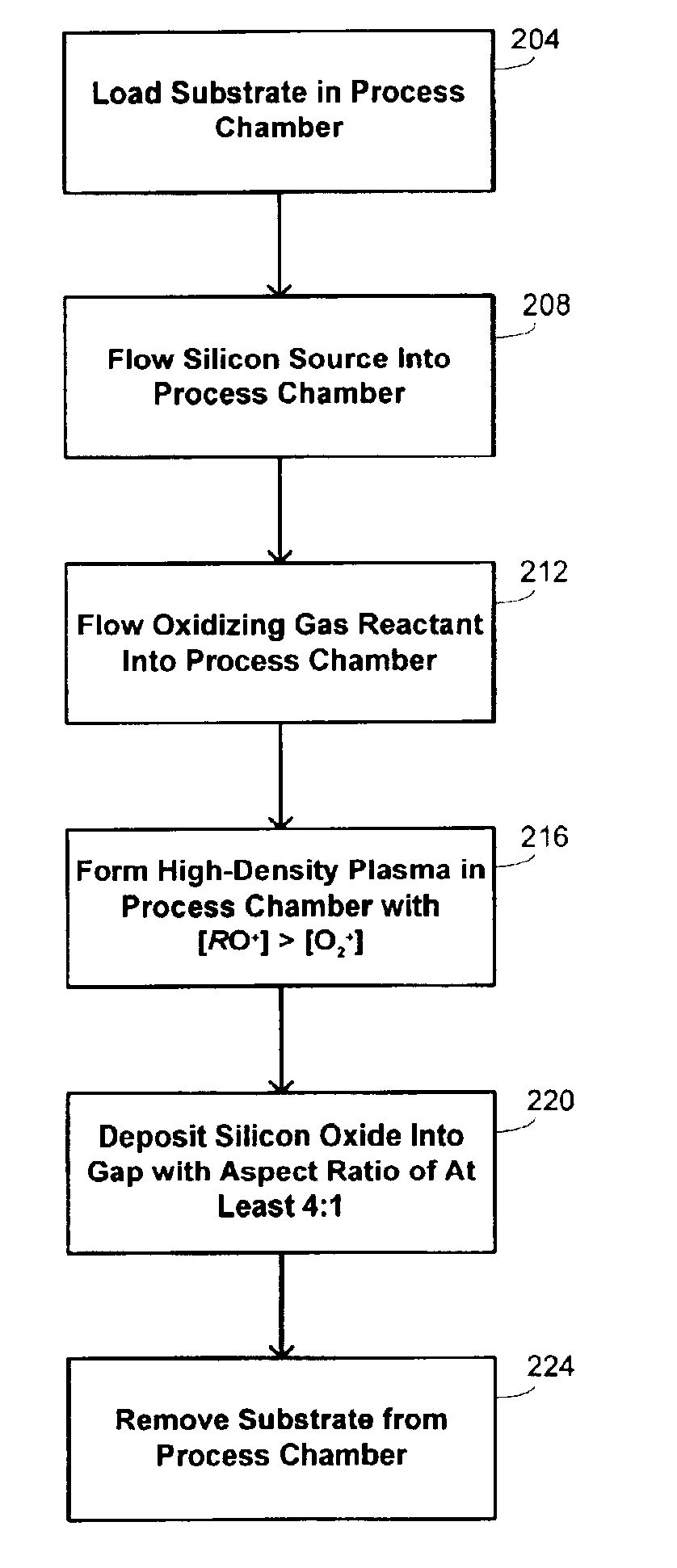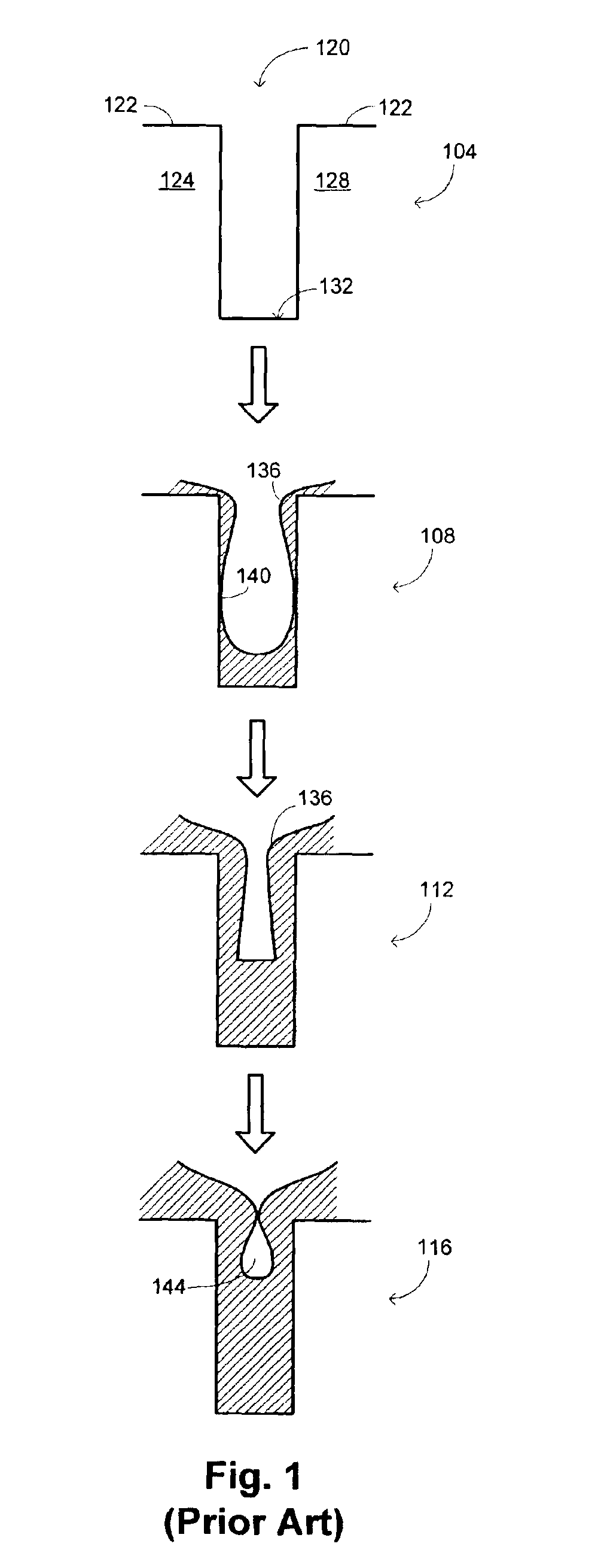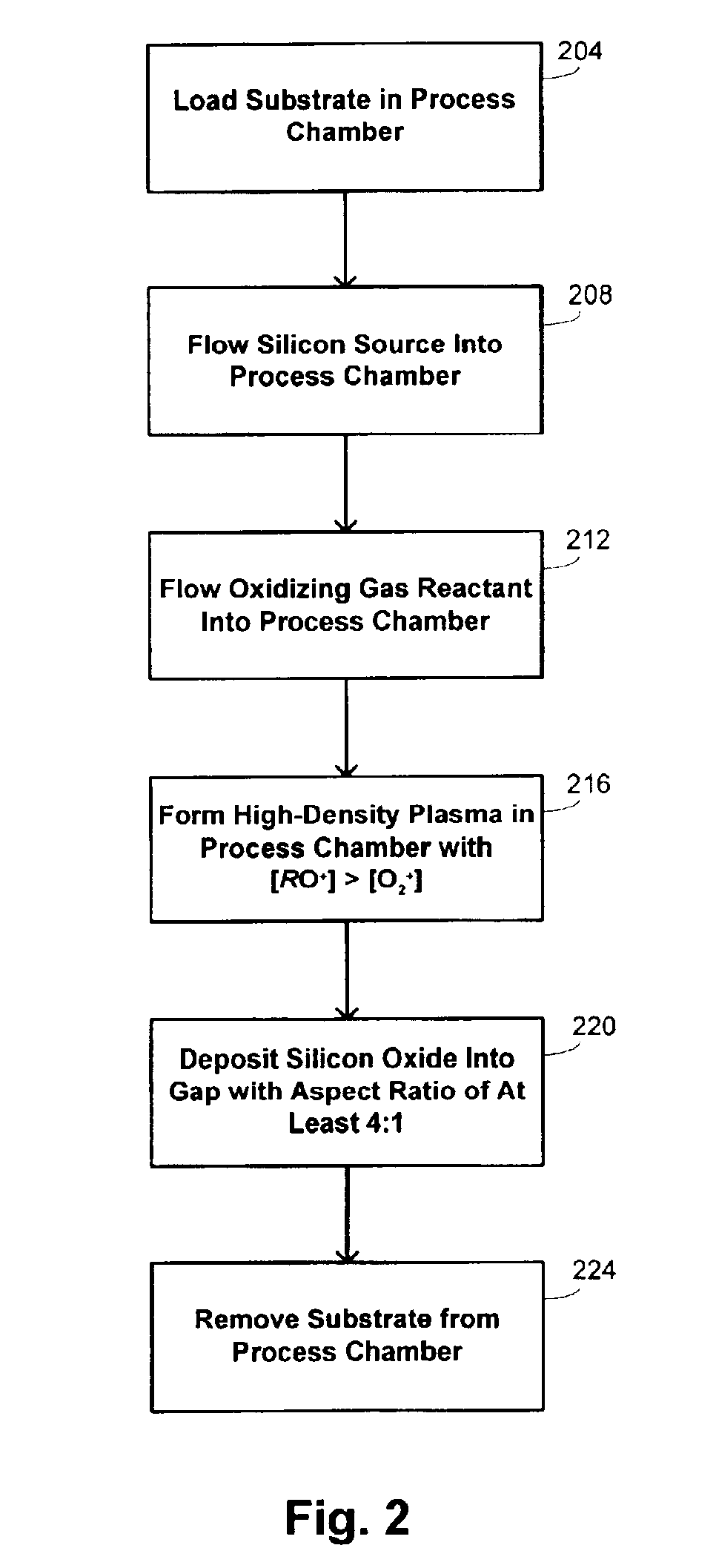Methods and systems for high-aspect-ratio gapfill using atomic-oxygen generation
a technology of atomic oxygen and high-aspect ratio, applied in the direction of solid-state diffusion coating, vacuum evaporation coating, coating, etc., can solve the problems of increasing the aspect ratio, progressively more difficult to fill the gaps without leaving voids, and the width of these gaps decreases. , to achieve the effect of improving the redeposition characteristics
- Summary
- Abstract
- Description
- Claims
- Application Information
AI Technical Summary
Benefits of technology
Problems solved by technology
Method used
Image
Examples
Embodiment Construction
[0025]Embodiments of the invention are directed to a method of depositing a silicon oxide layer to fill a gap in a surface of a substrate using a high-density-plasma CVD process. Silicon oxide films deposited according to the techniques of the invention have excellent gapfill capabilities and are able to fill high-aspect-ratio gaps encountered in, for example, shallow-trench-isolation (“STI”) structures. Films deposited by the method of the invention are suitable for use in the fabrication of a variety of integrated circuits, and are particularly useful in the fabrication of integrated circuits having minimum feature sizes of 0.10 μm or less.
[0026]As used herein, a high-density-plasma process is a plasma CVD process that includes simultaneous deposition and sputtering components and that employs a plasma having an ion density on the order of 1011 ions / cm3 or greater. The relative levels of the combined deposition and sputtering characteristics of the high-density plasma may depend o...
PUM
| Property | Measurement | Unit |
|---|---|---|
| temperature | aaaaa | aaaaa |
| temperature | aaaaa | aaaaa |
| temperature | aaaaa | aaaaa |
Abstract
Description
Claims
Application Information
 Login to View More
Login to View More - R&D
- Intellectual Property
- Life Sciences
- Materials
- Tech Scout
- Unparalleled Data Quality
- Higher Quality Content
- 60% Fewer Hallucinations
Browse by: Latest US Patents, China's latest patents, Technical Efficacy Thesaurus, Application Domain, Technology Topic, Popular Technical Reports.
© 2025 PatSnap. All rights reserved.Legal|Privacy policy|Modern Slavery Act Transparency Statement|Sitemap|About US| Contact US: help@patsnap.com



